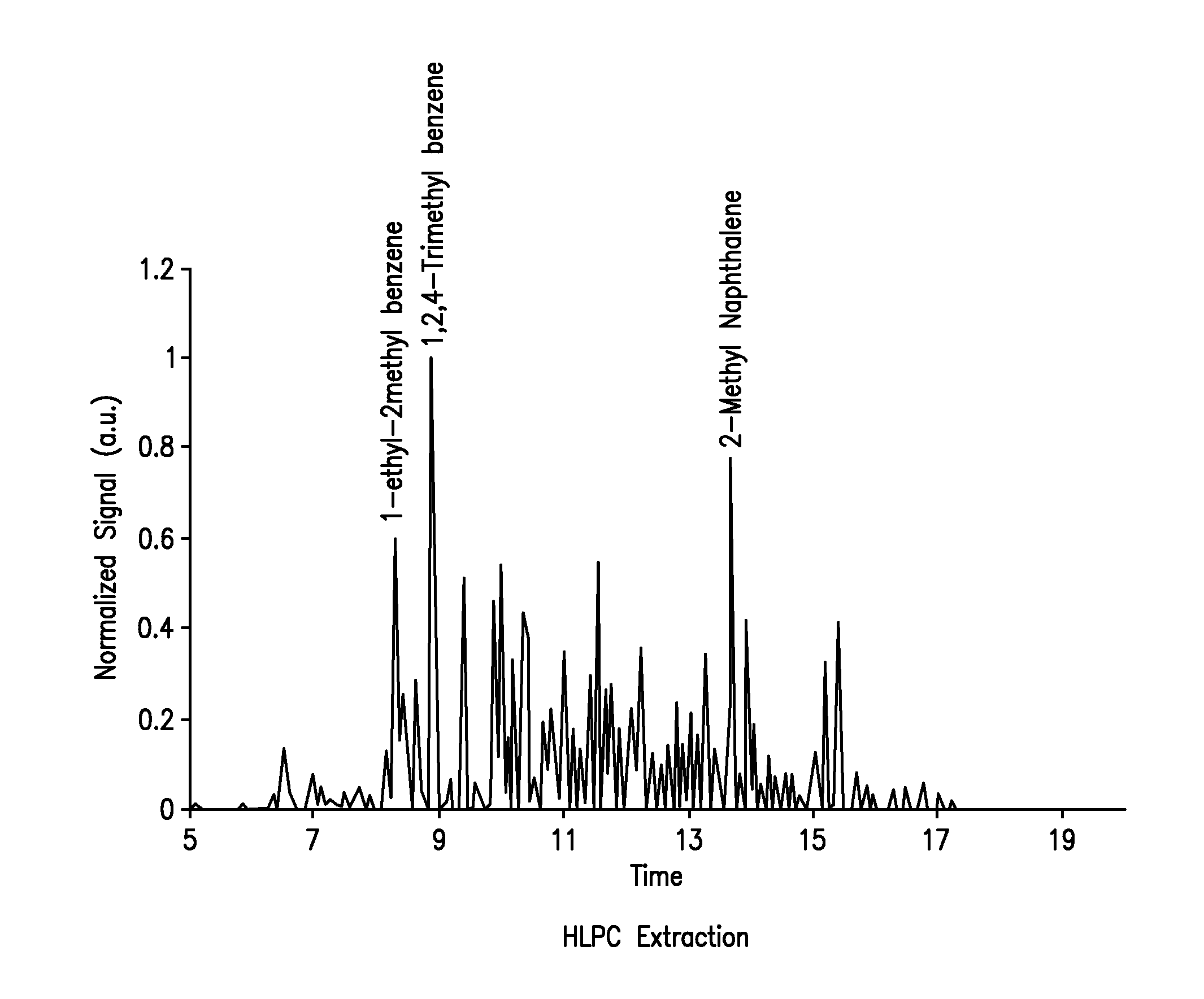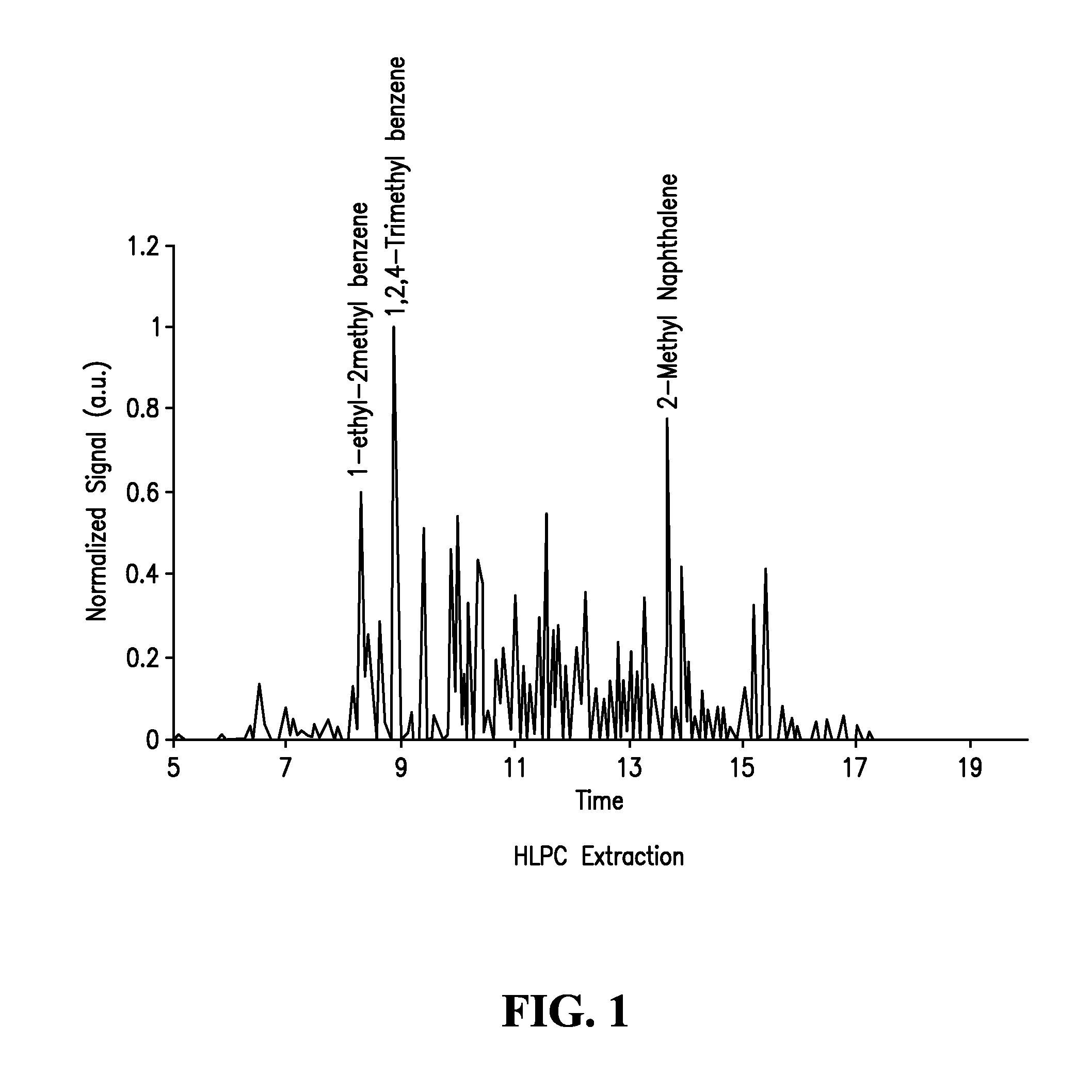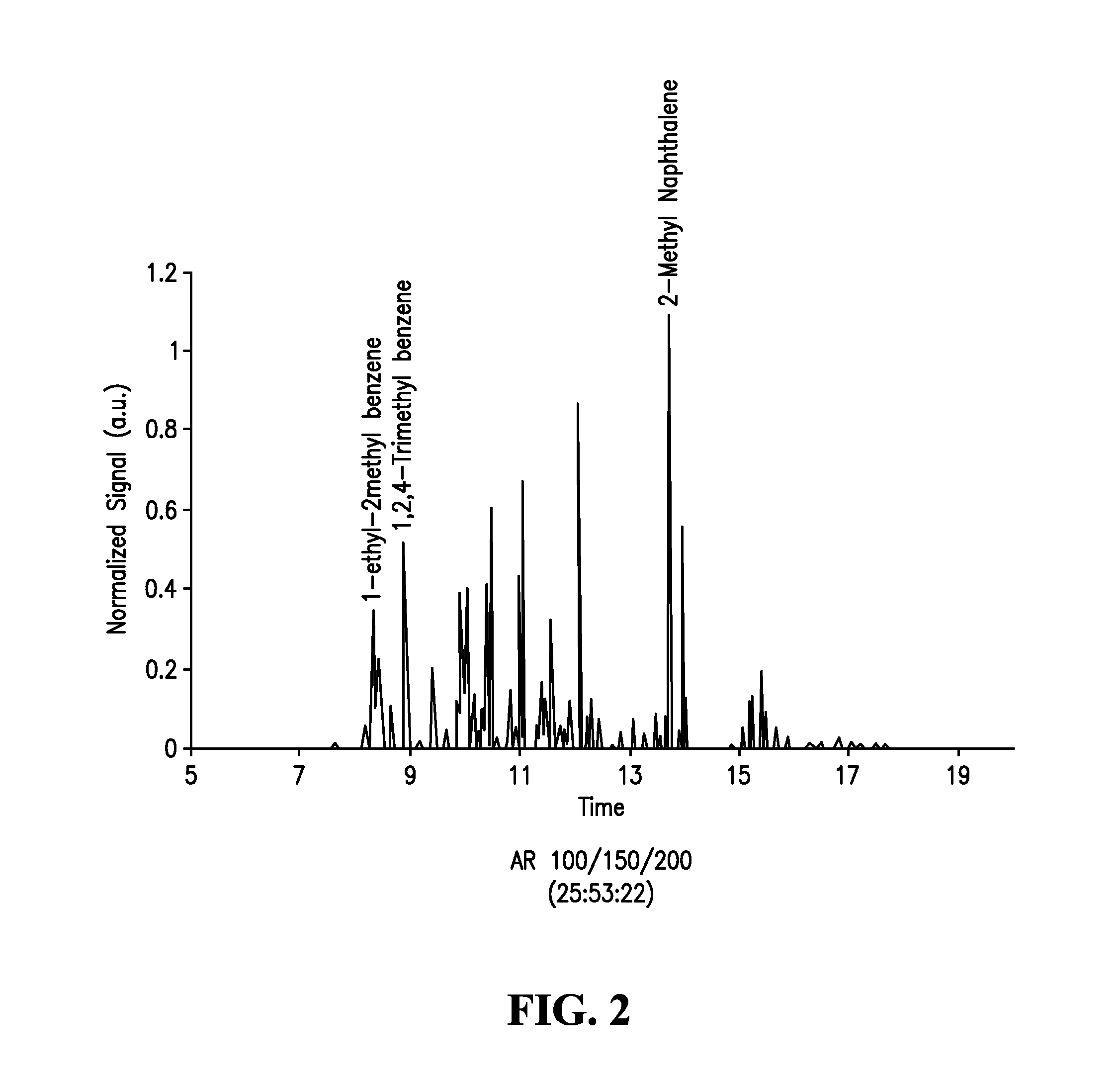Biogenic Turbine And Diesel Fuel
a biogenic turbine and diesel fuel technology, applied in biofuels, fuels, thickeners, etc., can solve the problems of increasing pollution per mile, increasing pollution, and being difficult to predict, and achieve high energy conten
- Summary
- Abstract
- Description
- Claims
- Application Information
AI Technical Summary
Benefits of technology
Problems solved by technology
Method used
Image
Examples
Embodiment Construction
[0088]As discussed above, the present invention provides a non-petroleum-based renewable fuel comprised of fully renewable components, i.e., components derived from bio-sources such as corn. This fuel has several variants, the preferred variants being turbine fuel and diesel fuel. Advantageously, the components of the fuels discussed above are all derivable from plant or animal oils, and the product can be tailored to the input stock. In general, plant oils are preferred due to their lower molecular weight products.
[0089]Both the turbine fuels and the diesel fuels of the present invention provide an overall mix and match with discreet components derivable from all plant or animal oils, and the product can be tailored to the input stock. In general, plant oils are preferred as the base stock for production of the fuel component of the composition, due to their lower molecular weight products. With regards to same, the fuel component can be derived from various plant source bio-oils. ...
PUM
| Property | Measurement | Unit |
|---|---|---|
| vol % | aaaaa | aaaaa |
| octane number | aaaaa | aaaaa |
| octane number | aaaaa | aaaaa |
Abstract
Description
Claims
Application Information
 Login to View More
Login to View More - R&D
- Intellectual Property
- Life Sciences
- Materials
- Tech Scout
- Unparalleled Data Quality
- Higher Quality Content
- 60% Fewer Hallucinations
Browse by: Latest US Patents, China's latest patents, Technical Efficacy Thesaurus, Application Domain, Technology Topic, Popular Technical Reports.
© 2025 PatSnap. All rights reserved.Legal|Privacy policy|Modern Slavery Act Transparency Statement|Sitemap|About US| Contact US: help@patsnap.com



